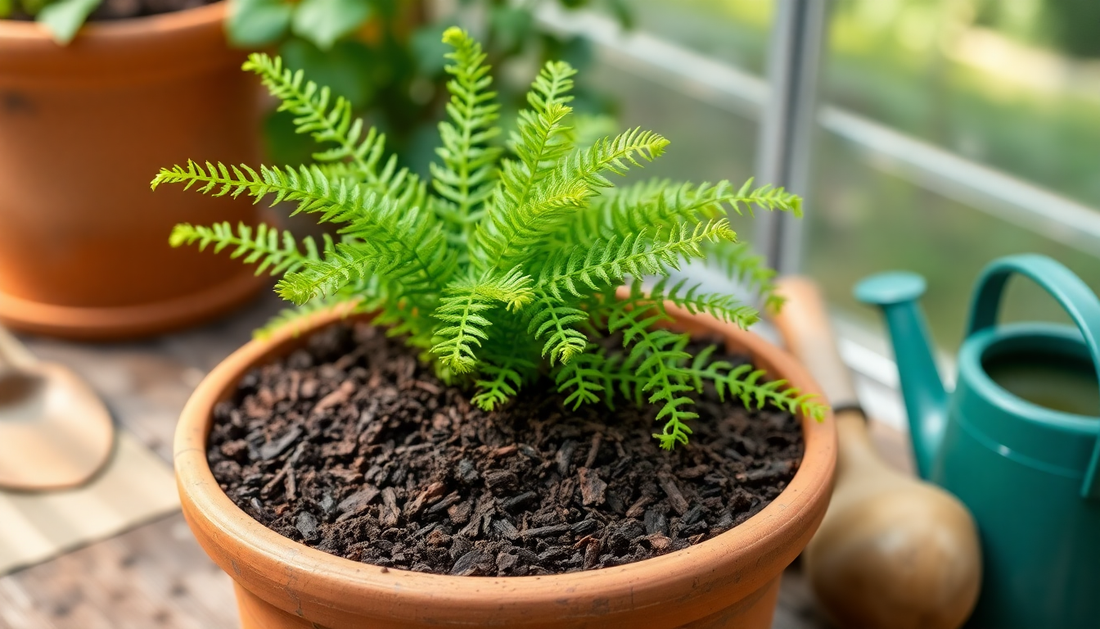
The Ultimate Guide to the Best Potting Mix for Ferns
Ferns are a beloved addition to any garden or indoor space, with their lush, verdant foliage and delicate fronds. However, to ensure your ferns thrive, it's crucial to provide them with the right growing medium. In this comprehensive guide, we'll explore the best potting mix for ferns, the essential ingredients, and tips to create the perfect soil blend for your fern-filled oasis.
Understanding Fern Soil Requirements
Ferns are unique plants that have specific soil preferences. Unlike many other houseplants or garden varieties, ferns require a potting mix that retains moisture while still allowing for proper drainage. This delicate balance is essential for the health and longevity of your fern collection.
Moisture-Retaining Capabilities
Ferns are native to humid, shaded environments, where the soil remains consistently moist. In their natural habitat, the soil is rich in organic matter, which helps to retain water and prevent the roots from drying out. When growing ferns in a potted or indoor setting, it's crucial to mimic these conditions by using a potting mix that can hold onto moisture without becoming waterlogged.
Nutrient-Rich Composition
In addition to moisture retention, ferns also thrive in nutrient-rich soil. The ideal potting mix for ferns should be infused with organic matter, such as compost or peat moss, to provide the necessary nutrients for healthy growth and development.
Optimal Drainage
While ferns require moist soil, they cannot tolerate standing water or overly saturated conditions. The potting mix must also have excellent drainage capabilities to prevent root rot and other moisture-related issues.
The Best Potting Mix for Ferns
Now that we've explored the essential soil requirements for ferns, let's dive into the components that make up the perfect potting mix.
Sphagnum Peat Moss
Sphagnum peat moss is a key ingredient in the best potting mix for ferns. This natural material is highly absorbent, helping to retain moisture in the soil while also providing aeration for the roots. Peat moss also helps to acidify the soil, which is preferred by many fern species.
Compost or Humus
Incorporating organic matter, such as compost or humus, into the potting mix is crucial for ferns. These materials not only provide essential nutrients but also improve the soil's water-holding capacity and overall structure.
Vermiculite or Perlite
To ensure proper drainage and aeration, it's essential to include a lightweight, porous material like vermiculite or perlite in the potting mix. These ingredients help to prevent soil compaction and ensure that excess water can easily drain away from the roots.
Bark or Coconut Coir
For an additional moisture-retaining element, consider adding shredded bark or coconut coir to the potting mix. These materials help to create a more open and airy soil structure while still maintaining the necessary moisture levels.
Slow-Release Fertilizer
To provide a steady supply of nutrients for your ferns, incorporate a slow-release fertilizer into the potting mix. This will ensure that your ferns receive the essential minerals and nutrients they need for robust growth and vibrant foliage.
Creating the Perfect Potting Mix for Ferns
Now that you know the key ingredients, let's explore the step-by-step process for creating the ultimate potting mix for your ferns.
Ratio of Ingredients
The ideal ratio for a fern-friendly potting mix is:
- 40% sphagnum peat moss
- 30% compost or humus
- 20% vermiculite or perlite
- 10% bark or coconut coir
Adjust the ratios as needed to achieve the desired moisture-retaining and drainage properties for your specific fern species.
Mixing the Ingredients
- Start by combining the sphagnum peat moss and compost or humus in a large container or potting tray.
- Add the vermiculite or perlite and the bark or coconut coir, and mix thoroughly to ensure an even distribution of all the components.
- Incorporate the slow-release fertilizer, following the manufacturer's instructions for the appropriate amount.
- Gently mix the entire blend until it's well-combined and has a consistent, fluffy texture.
Testing the Potting Mix
Before using the potting mix, it's essential to test its moisture-holding and drainage capabilities. Perform a simple test by filling a container with the mix, watering it thoroughly, and then checking the drainage and moisture levels over the next few days.
The perfect potting mix for ferns should retain moisture without becoming waterlogged. If the mix drains too quickly or stays too wet, adjust the ratios of the ingredients accordingly.
Caring for Ferns in the Perfect Potting Mix
Once you've created the ideal potting mix, it's time to put it to use. Here are some tips for caring for your ferns in their new, nutrient-rich home:
Potting and Repotting
When potting or repotting ferns, be sure to use the custom potting mix you've created. Gently loosen the roots and place the fern in the new container, filling in the sides with the potting mix. Water thoroughly and allow any excess water to drain.
Watering
Ferns thrive in consistently moist soil, so be sure to water them regularly. Check the soil moisture by sticking your finger into the mix - if the top inch or two feels dry, it's time to water. Avoid letting the soil dry out completely or become waterlogged.
Fertilizing
Supplement your ferns' nutrient needs by applying a balanced, water-soluble fertilizer every two to four weeks during the growing season. This will help to maintain the optimal nutrient levels in the potting mix.
Monitoring and Adjusting
Keep a close eye on your ferns and observe any changes in their growth or appearance. If you notice any issues, such as wilting, discoloration, or stunted growth, adjust the watering schedule or consider repotting the fern in a fresh batch of the custom potting mix.
By following these guidelines and using the best potting mix for ferns, you'll be well on your way to creating a thriving, lush fern oasis in your home or garden. Enjoy the beauty and serenity that these magnificent plants bring to your space.







No comments